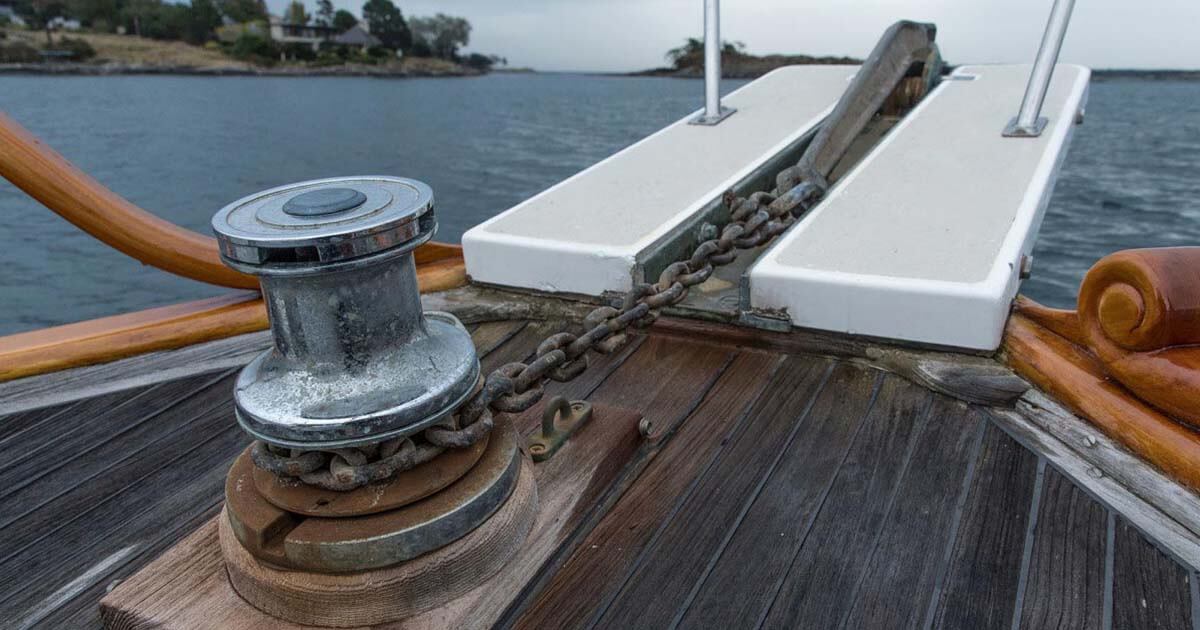
How to use a winch without draining the batteries
We frequently observe sailors continuously pulling the chain up at the anchorages. They most likely possess large or high-capacity batteries and are not concerned about draining them. They may also be unaware of how much winching and anchoring operations can influence the amperage on board. Since the best management of resources on board, including electricity, should be the guiding principle of a good sailor, regardless of the availability of own resources, it is certain that such behaviour is wrong and completely unseaworthy.
When anchoring, it is actually against the rules to rely solely on the electric winch, which runs the risk of quickly draining the battery.
Let’s look at some battery-saving techniques to maximise the power of the winch.
The first rule of anchor lifting: the chain must be vertical

When a sailboat is at anchor in the absence of wind, the anchor chain will undoubtedly descend vertically from the bow to the bottom of the ocean. Given that the winch only needs to lift the chain’s weight in these circumstances, lifting the chain will be simple and effortless. But after a short distance, the chain begins to rise from the seafloor and is positioned diagonally in the direction of the anchor, increasing the pulling force on the winch. When the lift is stopped, the boat is propelled forward by the weight of the chain until the deck is vertical once more, at which point the lift can resume. The lift becomes smoother and more continuous when using the engine to propel forward motion.
On the other hand, if it’s windy and you insist on using only the winch, even when the chain is clearly tilted and tensioned, you run the risk of exceeding the electrical device’s maximum pull rating, overloading the batteries, and causing them to discharge with a subsequent decrease in current.
Prolongued efforts are not sustainable for the winch

The torque, or the force that an electric motor like the one in a winch transmits to the gear wheel, is proportional to the absorbed current. When the load on the chain is doubled, the absorbed current is also doubled, which reduces the battery consumption time proportionally. A 100-amp battery could be completely discharged in a matter of minutes by a 1,500-watt winch drawing 125 amps. Use the winch with the least amount of force possible and, if at all possible, stop it whenever you notice an increase in traction. Additionally, it is strongly advised to abstain from using a winch to raise an anchor from the ocean floor. It is preferable to use the motor with small forward motions for this operation because it is both more effective and does not adversely affect the batteries.
4 things to know about winch usage

On the other hand, very little battery power is used to lower the anchor with the winch. It is better to use the winch clutch to lay the anchor, which entails free descent with the engine off, because the operation is quite slow when there is a lot of seabed.
It is wise to keep in mind the following guidelines in order to understand the forces involved during anchoring:
- The winch motor has already exceeded the nominal absorption limit when it begins to lose turn. If it continues to drop, you run the risk of completely draining the batteries.
- The amount of current available if the engine is running during the manoeuvre is almost negligible, or less than 5%.
- When using the winch for 5 consecutive minutes using the load indicated on the engine plate, the batteries are discharged and can only be recharged with several hours of charging. Also note that if the battery drops below 11 volts, it is difficult to restore it.
- A current limiter, sometimes referred to as “engine protection,” is typically used to protect the electrical line for the winch. This device allows the use of heavy loads only for a short period of time. If these thresholds are exceeded, the engine protection is turned off, and eventually, the current flow to the winch is cut off.
You May Also Like

Sailing to Malta by sailing boat, between the crystal sea, magnificent nature, and history
23/11/2022
Sailing in Montenegro – regenerate in the heart of the Balkans
01/12/2021






